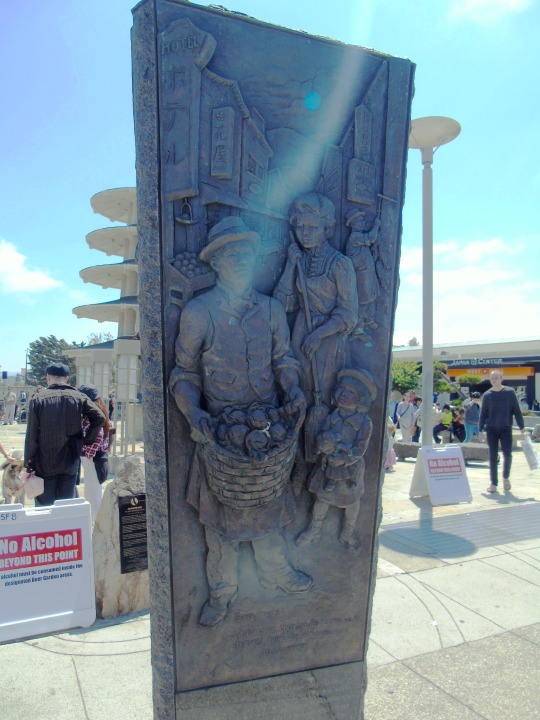#historical injustice
Explore tagged Tumblr posts
Text
Title: Observing Trail of Tears Commemoration Day: Remembering a Tragic Chapter in American History
Introduction Trail of Tears Commemoration Day, observed annually on September 16, is a solemn day dedicated to remembering and honoring the suffering and resilience of Native American communities during the Trail of Tears. This day marks the forced removal of thousands of Native Americans from their ancestral lands in the 1830s. Explore the historical significance of the Trail of Tears, its…
#Cherokee Nation#Commemoration Day#cultural heritage#Historical Injustice#Indian Removal Act#Native American History#Native American Resilience#Native American Tribes#Trail of Tears
0 notes
Text
Bridgerton: A Diverse Fantasy or a Distorted Memory?
“Bridgerton” has captured the hearts and imaginations of viewers around the world with its sumptuous visuals, compelling storylines, and groundbreaking diverse casting. Created by Chris Van Dusen and produced by Shonda Rhimes, this period drama has been lauded for showcasing Black, brown, and Asian actors in roles traditionally reserved for white actors in Regency-era settings. As a celebration…
#Bridgerton#British aristocracy#Chris Van Dusen#colonialism#critical reflection#diverse casting#escapism#fantasy vs. reality#historical accuracy#Historical Context#historical injustice#inclusive narratives#opulence#people of color#period drama#racial diversity#racial power dynamics#Regency era#Representation#romanticized history#screen representation#Shonda Rhimes#Slavery#TV series analysis#wealth and privilege
0 notes
Text
...spoke the truth!
Nana Addo Dankwa Akufo-Addo, President of the Republic of Ghana, addresses the general debate of the 78th Session of the General Assembly of the UN
(New York, 19 - 23 and 26 September 2023)
56 notes
·
View notes
Text
Historical amnesia is a dangerous phenomenon not only because it undermines moral and intellectual integrity but also because it lays the groundwork for crimes that still lie ahead.
—Noam Chomsky, Who Rules the World?
#quotes#noam chomsky#who rules the world?#morality#historical amnesia#integrity#crime#activism#apathy#authority#brainwashing#democracy#freedom#injustice#indoctrination#moral-bankruptcy#passivity#text
18 notes
·
View notes
Text
As my final act of advocacy before the election, I’ve published a fan fiction that I hope a lot of people read before they make the decision to vote. It’s fictional, but based on real circumstances and environments. I hope it can be the final straw that encourages someone to stay in line at the polls or to show up and Vote Kamala even if they were leaning third party. The more kudos and comments I get, the more people on AO3 that will see it.
In 1958 Alabama, a young Black student named Devon goes missing, and his disappearance is met with indifference from local authorities. But when two outsiders arrive—one with a deep understanding of time and history—they team up with a brave girl named Everline to uncover the truth and fight for justice in a system built to overlook people like them.
This story tackles themes of systemic racism, the fight for civil rights, and the emotional toll of seeking justice when the world tries to ignore your pain. Through the lens of historical fiction, it reflects the struggles we still face today and calls on all of us to act, listen, and stand against injustice. It emphasizes the damage Donald Trump represents.
Even if you’ve never watched Doctor Who, this is a story for those who care about racial justice, historical truth, and the power of allyship. It’s about breaking the silence, uplifting unheard voices, and holding onto hope in the face of loss.
If you’re passionate about civil rights or the ongoing fight for equality, this story offers a glimpse into the past with lessons that still resonate in the present.
Update: Got a troll comment I actually wish to address. I know it might truly seem odd to have cell phones in this story. It’s just a nod to a Doctor Who episode where the Doctor mentions having once lent Elvis a cell phone. The Doctor and Rose are time travelers. It’s just a little Easter egg. Fellow Kamala supporters, if you think I should remove it, let me know.
Read the story here https://archiveofourown.org/works/60316429/chapters/153931066
#historical fiction#doctor who#racial injustice#racial equality#deep south#us politics#kamala harris#vote blue#donald trump#anti donald trump#vote#allyship#civil rights movement#tenrose#rose tyler#timepetals#fanfiction
11 notes
·
View notes
Text
When I talk about ground-breaking trans history, I'm talking about this:

#trans#transgender#lgbt#lgbtq#ftm#mtf#nonbinary#trans meme#described images#image description in alt#YES THIS IS 10000000% A JOKE POST#this image just lives rent-free in my head because i'm a simple man#i think i'm so obsessed because i would LOVE a miku binder. how hilarious and campy would that be#it was weird during the time where people woobified the founding fathers because of that musical though#like. there /might/ be better historical figures to do that to if you really want to????#so i'm definitely glad that part is over because it was probably.... Not Good#and anyway i don't think it's necessarily appropriate TO woobify historical figures like that?? like. it definitely crosses the line...#...to the point where you might treat them like a book character rather than a complex human being...#...especially if they have done injustices toward others. we must recognize that without downplaying it by treating them like a character
122 notes
·
View notes
Text

Might never recover from this book
8 notes
·
View notes
Text


























Day of Remembrance
February 19th is a significant date for the Japanese American community. On this day in 1942, President Franklin D. Roosevelt signed Executive Order 9066, which gave the U.S. Army the authority to remove civilians from the military zones established in Washington, Oregon, and California during WWII. This led to the forced removal and incarceration of some 120,000 Americans of Japanese ancestry living on the West Coast, who had to abandon their jobs, their homes, and their lives to be sent to one of ten concentration camps scattered in desolate, remote regions of the country.
No Japanese Americans were ever charged, much less convicted, of espionage or sabotage against the United States. Yet they were targeted, rounded up, and imprisoned for years, simply for having the “face of the enemy.”
Every February, the Japanese American community commemorates Executive Order 9066 as a reminder of the impact the incarceration experience has had on our families, our community, and our country. It is an opportunity to educate others on the fragility of civil liberties in times of crisis, and the importance of remaining vigilant in protecting the rights and freedoms of all.
Source
#Day of Remembrance#DOR#19 February 1942#vacation#Minidoka National Historic Site#Minidoka War Relocation Center#landscape#Minidoka Internment National Monument#Japanese American history#free admission#Idaho#San Francisco#California#cityscape#Japantown#From Injustice to Redress by Louis Quaintance and Eugene Daub#Japantown Peace Plaza#WWII#World War Two#summer 2017#original photography#travel#tourist attraction#landmark#USA#architecture#anniversary#US history#Japanese-American history
20 notes
·
View notes
Text
perhaps it’s a good thing we don’t live here because I think if we did it might spoil me for any other city
#*here being san francisco#obv every city is imperfect and built upon historical/ongoing injustices and that’s as true here as everywhere else#but this is a very easy city to be enchanted by
10 notes
·
View notes
Text
👨👩👧👦Out with Incest Laws: Reconsider Blood Quantum Laws in Native Reparations
An open letter to State Governors & Legislatures
1 so far! Help us get to 5 signers!
I am writing to express profound concerns about the continued reliance on Blood Quantum Laws, or Indian Blood Laws, in Native Reparations Programs. These laws, established by federal and state governments as far back as 1705, define Native American status based on fractions of Native American ancestry, perpetuating harmful consequences for tribal communities and some, alarmingly, terminating before just 5 generations.
The use of Blood Quantum Laws has led to detrimental effects on Native American families and communities. It has incentivized harmful family planning practices, compelling individuals to marry within close kin networks to maintain "pure bloodlines." This practice not only violates individual autonomy but also jeopardizes genetic diversity and the long-term viability of tribal populations.
Of utmost concern is the declining population within many tribal communities, with some nearing critical thresholds of fewer than 1000 individuals. This situation is further exacerbated by the principles of population biology, particularly the 50/500 rule, which underscores the need for a minimum population of 500 individuals to reduce genetic drift and ensure sustained viability. It is troubling to note that these laws inadvertently encourage cousin marriages, posing additional risks to community health and resilience.
Moreover, Blood Quantum Laws impose an arbitrary expiration date on government-funded reparations and jeopardize the cultural continuity of these communities. By tethering Native American status to ancestry thresholds, these laws undermine the diversity and autonomy of tribal enrollment criteria.
I urge policymakers to urgently reconsider the use of Blood Quantum Laws in Native Reparations Programs and advocate for a more inclusive and sustainable approach to reparations. This approach should prioritize the cultural and social integrity of Native American communities, safeguarding their continued existence and resilience for future generations.
Our villages were razed by colonizers, our ancestors were genocide survivors, and, as ever, our children bear the enduring impacts of historical injustices.
Thank you for considering these critical issues and taking decisive action to address them.
Source:
📱 Text SIGN PBDXGL to 50409
🤯 Liked it? Text FOLLOW IVYGORGON to 50409
#IVYGORGON#PBDXGL#resistbot#Blood Quantum#Native American#Reparations#Tribal Communities#Genetic Diversity#Indigenous Rights#Cultural Integrity#Population Biology#Government Policy#Historical Injustices#Tribal Enrollment#Ancestry Criteria#Native Identity#Kinship Networks#Genetic Drift#Tribal Sovereignty#Cousin Marriages#Diversity and Autonomy#Indigenous Heritage#Colonial History#Policy Reform#Social Justice#Human Rights#Cultural Survival#Community Health#Historical Trauma#Advocacy
10 notes
·
View notes
Text
Madame Putiphar Groupread. Book Two, Chapter XXXIII
The Parc-aux-Cerfs makes a stage entrance via our disgusting main libertines's secret schemeing meeting (as always, sensitive content is discussed within)
{check my friends and fellow readers's posts as well-> @sainteverge and @counterwiddershins }{pro tip: sainteverge is translating this lexical goliath here, Even if you can read it in french, their verson usually has very interesting footnotes and research you cannot find in the online french versions}

[x]
Not to be redundant but formaly speaking this is one of the theatrical dialogue chapters. Borel makes his dolls talk with each other, the narrator makes zero interventions.
We have the rare pleasure of an intimate glimpse into Villepastour's and Putiphar's secret reunion...
Our two friends (like Saint-Ange and Dolmancé, or Valmont and Merteuil, but even less likeable somehow) are together because Villepastour wants to be paid back for the help he has given Putiphar in the Patrick affair.
Our borelesian libertines are hypocrites. If the sadian duo had their own mansion and boudoir to speak as freely as they wanted and rip as many social conformity masks as they wished, Villepastour and Putiphar do the contrary. Even in private they feign offended morality, especially Putiphar.
She intends to make Villepastour believe Patrick has dishonoured her “up to the waist”. (the “woman pretends to be raped by the guy who rejected her” trope is pretty disgusting, do better Borel) Villepastour humours her and goes off in a rant full of mock puritan indignation. Interesting concepts in his speech are: “contagious” people, who spread their noxious mores among the Court and the City... who are these contagious people? Foreigners? Not really, but Villepastour is keen on demonizing foreigners during this whole chapter. It's Readers of Philosophy, apparently. The Philosophers (aka the french Enlightnement gang, most of whom had been in jail or in exhile) had corrupted France irreparably, causing according to Villepastour, children to need wet nurses out of their own sheer perversion, among other things. The philosophers had gone too far in their attempt to shake off prejudices, they have shaken virtue as well.
(I will always remark how much influence the french enlightenment, CERTAIN TEXTS of the French Enlightenment have had to many romantic authors. Within the petit cénacle, Nerval was a huge admirer of Diderot's Jacques le fataliste, of Rétif de la Bretonne's Parisian Nights, Borel has some Diderotian turns of phrase in Passereau, and names "Jacques" in Medianoche, seems to be in a constant dialogue with some of Rousseaus works in Passereau and in Madame Putiphar... Gautier was an admirer of Diderot's Salons, and followed his conversational and passionate school of art criticism, beging to go against artistic and moral conventions. The Enlightenment is of course, what the Romantics were reacting against, but. Hastag notalllumières. The secret, posthumously published fictions of Diderot, those transgressive texts he didn't dare to publish for fear of being incarcerated a second time, seem like a crucial key to undertsand where some of the interests of the young Romantics came from. He is even part of the inspiration behind Schiller's Rauber, and with it, the Romantic Outlaw trope. Don't sleep on Diderot is what i'm saying, his influence is vast and his secret texts are not what his more divulged writings would lead you to think he is)
That last paragraph about Virtue is interesting because, on the one hand, OH THE HYPOCRISY. You can totally imagine the ironic tones in which these two speak of Virtue, how disgustingly they accuse mere children of being perverse. On the other, it's always interesting to see how the elites will seek for a scapegoat: philosophers in this case. And I also like how Putiphar, who is shown to be a fan of the enlightenmet in previous chapters (owns a Rousseau volume that Patrick uses against her) likes the Philosophes only when they are useful to her (once they go too far in their challenges to her class, she cracks a whip and it's off to jail/exhile for them) Remember how Borel spoke of her being a benefactress to the Philosophes because it gave her power, it provided her with intelligent people who were indebted to her/therefore in her service.
So these two delightful fellas continue their tête-à-tête, the marquis complains about Deborah to Putiphar, he wants her arrested. Why, asks madame Putiphar, when raping her would be so much simpler -she is now alone- and less of a boureaucratic hassle, surely. (men she says, can always triumph over women, “courage, marquis!”, noone is un-rapeable, even if she pretends to be so)(the marquis knows that the fact that Patrick is away is almost irrelevant since Deborah has been more than capable of defending herself, but he conveniently keeps silent.)
So, given that Debby is an “impenetrable” fortress, Madame Putiphar reasures him “don't worry, we will form her” (Putiphar, like the marquis before her and like many Sade characters, insists that sex is a discipline one has to be enlightened on, by force if necesary...)
The marquis does a description of Debby's "English hipocrisy" that is so appealing to frenchmen who are too accustumed to their women's shamelessness, (very hitchcock to truffault's definition of english vs latin beauties core)(but we don't need to go back to the 60's... this stereotype is alive and well)
So Putiphar claims that her Punishment for Deborah will be Educating her, forming her... the Marquis should know by now what she means, but he cannot tell..
Putiphar explains she is worried her enemies are pushing a new favorite to turn the King against Pompadour. She is certain she is not as witty to hold his attention for long, as she has. And the Parc-aux-Cerfs is pretty barren at the moment, only a couple of young girls are being trained in it (and when Borel writes young, he means it, after the first period in which the parc was mostly populated by soldier's widows forced to sexually satisfy the king, the royal person became fearful of syphilis, so he started demanding children, girls aged between 12 and 14 years)(this is all real, Borel has been accused of demonizing Pompadour but she was actually involved in this, at least during the initial period of the Parc, and she was well aware of what happened in it, since it was strategically beneficial for her to be the author of the king's pleasures even if it was by proxy. It is important to recognize that many Romantic novels, while melodramatic and exagerated if you will, root their fantasies in facts and have the intention of denouncing real forgotten horrors from a ruling class that had managed to return to power like reventants, after the french revolution, with no long lasting punishment for their crimes...)
Villepastour is delighted by the perverse perfection of the idea. Pompadour is weary Deborah, being so beautiful and intelligent, will grow ambitious and become a threat.
Villepastour says this is out of the question, since she is a prude and a peniless foreigner (it doesn't follow but ok) her pride is more of a potential threat, but there is no one The Madame cannot break in, Pompadour reasures him. She has tamed the most rebellious of them...
Pomp commands some henchman to kidnap deborah, in the meantime she makes out with Villepastour and invites him to dine with her. Cruelty is the ultimate aphrodisiac, but more importantly, a tool of government.
------
annex:
first hand source on the children of the parc aux cerfs. even this person who intends to rescue the king from very partial anti-royalist historians (Michelet), considers this a reliable, dispassionate source (a source brought to light by Michelet himself)(Michelet accuses the king of being sadistic, wilfully harming the children. The fact that this man thinks it's all good since the children were "not virgins, but sluts" and there are no historical accounts depicting the king hitting them makes it all ok.... is beyond me)
20 février 1756 … …Le roi se livre à la nature, et cherche à se ragoûter par de petites filles très-neuves qu' on lui fait venir de Paris. Il se pique d' emporter des p... de quinze ans. On lui amena, il y a quelques jours, une petite fille de cet âge qui était à peine vêtue ; il s' enrhuma à la poursuivre dans le lit et hors du lit. Cependant, il fait du bien à ces petites créatures, et, s' il se comporte en paillard, il ne fait rien en ceci contre l' honnête homme. L' on dit que le Sieur Lebel, son grand pourvoyeur, est sur le côté, et l' on ne sait qui a procuré sa disgrâce….
Journal et mémoires du marquis d'Argenson Vol. 9. 1755-1757. [2] publ... pour la Société de l'histoire de France par E.-J.-B. Rathery
#madame putiphar#long post#text post#i am always grateful for the angry side of romanticism. motecristo putiphar goriot. i've learnt so much about power abuse via them#i am aware it's fiction thank you very much. but i love the combination of high drama + very real denounciation of historical injustices
7 notes
·
View notes
Note
people who say “the democrats should just focus on economics/policy” *glares at every centrist in my life who’s upset at the Democrats for being too “woke” and “allowing” Republicans to win* need to realize that statistically a lot of Dem policies are liked by about 2/3 of the country. Universal healthcare, free college, abortion, and helping undocumented immigrants gain citizenship for a few examples are supported by the majority of Americans. A refusal to vote blue is not about policy at all. Never has been.
it's the raaaaaaaaaacism
#anonymous#ask#politics for ts#i mean yeah#democratic economic policies are genuinely popular#because they -- zomgz -- help people#but for half this country that is not acceptable#because they might also help people of color#or redress historical racial injustice#or jfc even ACKNOWLEDGE it#and that is a bridge too far#and so we are stuck with this#*sigh*
40 notes
·
View notes
Text
A Tale of Resistance: Malcolm X and the Wounded Knee Massacre

Introduction:
In the annals of American history, two significant events stand as symbols of resistance and the struggle for justice: the activism of Malcolm X and the Wounded Knee Massacre. Though seemingly unrelated, these events are intertwined through the shared themes of indigenous rights, racial injustice, and the fight against systemic oppression. In this blog post, we delve into the relationship between Malcolm X and the Wounded Knee Massacre, exploring how their stories intersect and shed light on the ongoing struggle for equality and liberation.
Malcolm X: Championing Civil Rights and Empowerment:
Malcolm X, an influential civil rights leader, advocated for the rights and empowerment of African Americans in the United States. He staunchly opposed racial segregation, challenged white supremacy, and called for black liberation. His powerful speeches and unwavering commitment to social justice inspired a generation to resist oppression and fight for their rights.
Indigenous Rights and the Plight of Native Americans:
Parallel to the civil rights movement, Native Americans were also engaged in their own struggle for justice and self-determination. Native American communities faced centuries of displacement, forced assimilation, and broken treaties. The Wounded Knee Massacre of 1890 stands as a tragic symbol of the violence and oppression inflicted upon Native Americans by the U.S. government.
Common Ground: The Fight Against Systemic Oppression:
Despite their different backgrounds, Malcolm X and Native American activists shared a common understanding of systemic oppression and the need for collective resistance. Both movements sought to challenge oppressive systems and secure justice for their respective communities. Malcolm X's teachings on self-determination and the fight against institutionalized racism resonated with Native American activists who sought to reclaim their cultural identity and sovereignty.
Intersectionality and Solidarity:
The relationship between Malcolm X and the Wounded Knee Massacre extends beyond shared struggles; it highlights the importance of intersectionality and solidarity in the fight against oppression. By recognizing the interconnectedness of various struggles, activists can forge alliances, build bridges, and amplify their collective voices. Malcolm X's emphasis on unity and the power of alliances resonated with Native American activists, leading to a convergence of their efforts during the civil rights era.
Legacy and Lessons Learned:
Both Malcolm X and the Wounded Knee Massacre left a lasting impact on the fight for justice and equality. Malcolm X's legacy continues to inspire activists around the world, reminding them to challenge systems of oppression and demand liberation. The Wounded Knee Massacre serves as a stark reminder of the ongoing struggle for indigenous rights and the need to address historical injustices.
Conclusion:
The relationship between Malcolm X and the Wounded Knee Massacre unveils the interconnectedness of struggles for justice and the need for solidarity among marginalized communities. These historical events remind us that the fight against systemic oppression transcends boundaries and demands collective action. By exploring the shared themes of indigenous rights, racial justice, and resistance, we honor the legacies of both Malcolm X and the Wounded Knee Massacre. As we strive for a more just and equitable society, let us draw strength from these stories of resilience and continue the work of dismantling oppressive systems that affect us all.
#Malcolm X#Wounded Knee Massacre#Resistance#Activism#Civil Rights#Indigenous Rights#Racial Injustice#systemic oppression#Equality#Liberation#Empowerment#Self-determination#intersectionality#solidarity#Historical Injustices#Marginalized Communities#cultural identity#sovereignty#collective action#legacy#Social Justice#hip hop#black culture#hiphop fashion#hip hop style#streetwear#hip hop fashion#social issues#discrimination#human rights
9 notes
·
View notes
Text

Thomas Jennings was a free man born in 1791 in New York City. He was 30 years old when he was granted a patent for a dry cleaning process. In his early 20s Thomas Jennings became a tailor, and later opened a dry cleaning business in the city. As a tailor. Jennings' skills were so admired that people near and far came to him to alter or custom tailor items of clothing for them. Eventually, Jennings reputation grew such that he was able to open his own store on Church street which grew into one of the largest clothing stores in New York City. While running his business Jennings developed dry-scouring. He had many customers complain of their clothes being ruined by stains and so he began experimenting with cleaners and mixtures that would remove the stains without harming the material. He earned a large amount of money as a tailor and even more with his dry scouring invention and most of the money he earned went to his abolitionist activities. In 1831, Thomas Jennings became assistant secretary for the First Annual Convention of the People of Color in Philadelphia, PA. Thomas L. Jennings Dry Scouring technique created modern day dry cleaning. Jennings was fortunate that he was a free man at the time of his invention. Besides all the other indignities and cruelties slaves had to face, they were also ineligible to hold a patent. Under the US patent laws of 1793 a person must sign an oath or declaration stating that they were a citizen of the USA. While there were, apparently, provisions through which a slave could enjoy patent protection, the ability of a slave to seek out, receive and defend a patent was unlikely. Later, in 1858, the patent office changed the laws, stating that since slaves were not citizens, they could not hold a patent. Furthermore, the court said that the slave owner, not being the true inventor could not apply for a patent either. Thomas Jennings died in New York City in 1856.
#black history#Thomas Jennings#dry cleaning#inventor#tailor#abolitionist#New York City#patent law#slavery#abolitionist activities#dry scouring technique#historical injustice#patent discrimination#civil rights activism#African American entrepreneurship#19th century America
471 notes
·
View notes
Text
I may have mentioned this before (a long time ago), but for the NoHoper series, I love the idea of basing L's appearance at least a little (if not a lot) on the Lakeith Stanfield iteration. I just have a lot of thoughts about how the context of L being Black (whether that's Black British or Black American) actually adds to the core story of Death Note, and how much it should have enriched the story if properly explored.
(Of course, this was also the iteration that couldn't let us explore injustice from the perspective of a Japanese-American protagonist, so fml I guess).
#Death Note#NoHoper#fanfic#fanfiction#Noteflix#Lakeith Stanfield#i am a big believer in having a diverse cast because you shouldn't 'need a reason' for diversity to exist#but also in exploring the diversity perspectives and socio/cultural/historical contexts that it affords you#because everything says something about how we got here#and since themes like prejudice and injustice are super big in the NoHoper series i absolutely think i'd be missing a trick if i didn't
0 notes
Text





























The Presidential Proclamation 2537 which required that Americans from Germany, Italy or Japan must register with the Department of Defense, was issued on January 14, 1942. Proclamation No. 2537 permitted the arrest, detention and internment of enemy aliens who violated restricted areas, such as ports, water treatment plants or even areas prone to brush fires, for the duration of the war. Roosevelt reluctantly signed Executive Order 9066, which sent many Japanese-American families into internment camps, on February 19, 1942.
Source
#Presidential Proclamation 2537#14 January 1942#anniversary#USA#US history#WWII#World War Two#travel#Idaho#Minidoka National Historic Site#Minidoka War Relocation Center#vacation#Minidoka Internment National Monument#original photography#free admission#summer 2017#never again#tourist attraction#landmark#landscape#architecture#barracks#root cellar#Japanese-American history#From Injustice to Redress by Louis Quaintance and Eugene Daub#San Francisco#California#Japantown#cityscape
2 notes
·
View notes